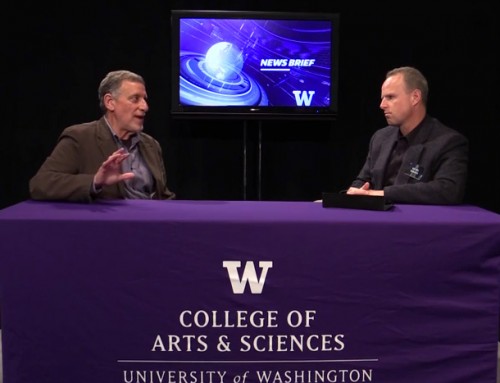Israel Studies Review, Volume 29, Number 1, Summer 2014, pp. 142-165(24)
Review of
Myron J. Aronoff and Jan Kubik,
Anthropology & Political Science:
A Convergent Approach
New York: Berghahn Books, 2013
368 pages, 23 figs & tables, bibliog., index
ISBN 978-0-85745-725-7
HB $95.00/£60.00
Myron Aronoff and Jan Kubik have taken aim at the insularity of the various social sciences. What a breath of fresh air that is! These two noted social scientists, whose numerous books and articles have spilled over disciplinary boundaries for years, present what they call a convergent approach, bringing together anthropology and political science (not to speak of sociology). Their topics sound like those of political scientists—parties, political coalitions, democratization, peace processes, the state, civil society, and the like—while their way of approaching those subjects hews closely to anthropology’s cultural paradigm.
They home in on the question of legitimacy, while ranging into a number of other topics, including democratization and identity construction (ethnic and national identity). Their principal tool is cultural analysis, “the symbolic and semiotic dimensions of politics, e.g., the importance of symbol, myth, rhetoric, and ritual” (xv). Indeed, in some ways, they are evangelists for semiotic analysis, arguing that the events, people, and institutions of politics can be seen through the lens of their “meaning.” Still, they are careful to add that the sort of rational analysis found in political science is not incompatible with various types of cultural analysis and that causal explanation can be combined with cultural interpretation.
The authors claim to be riding a wave of resurgent use of qualitative, micro-level, historical research in political science. But I am less sanguine that the discipline has been able to escape the narrow methodological and epistemological rut it has dug for itself in for the last few decades. The works they cite that challenge the dominant approach seem to me to be little more than spitting in the wind. Be that as it may, whether or not there has been a sea change, as they claim, this book is a welcome antidote to disciplinary provinciality.
The book ranges over a wide expanse of topics and themes, including the authors’ previous research on Eastern Europe, Israel, India, and the Netherlands; post-communism; dominant parties; civil society; methodology; epistemology and ontology; and much more. Overall the goal is to take the preoccupations of political scientists and change the focus from distance (political science’s penchant for universalizing findings) to close-up (anthropologists’ preference for particularizing). They argue for applying ethnographic analysis to political science’s traditional “case studies,” a combination put forward by one of the authors’ heroes, Max Gluckman, as the “extended case study.”
To help accomplish that, the authors present an outstanding critical understanding of five different types of ethnography—traditional/positivistic, interpretivist, postmodern, global (multiple research sites), and paraethnography (involving fieldwork sites such as the IMF, where the researcher is unlikely to gain direct access and has to rely on a variety of first-hand accounts and documents). In some ways, the last of these—paraethnography—is the most novel. It is applied in the book with great effect to the Camp David II negotiations, where a variety of accounts are analyzed to tease out differing interpretations—two, in particular, the orthodox and the revisionist—of what actually happened at the negotiations and why they failed.
For students of Israel, the book’s value goes beyond its theoretical usefulness. It is also a treasure trove of material on the politics of the country. Some of that can be found in the thematic chapters on ritual, identity, and other topics, and some, in dedicated chapters to Israel. Practically all the material on Israel is drawn from Aronoff’s lifelong research, which has appeared in multiple books and articles.
His most exciting work, to my mind, is on Israel’s Labor Party, which in one form or another dominated formal and informal politics for the better part of the twentieth century. Some of the most useful applications of the authors’ convergent approach are illuminated through the case of the party. Labor underwent a long process of internal decay and decline in the 1960s and 1970s, resulting in its ouster from power in the 1977 elections. Aronoff demonstrates through the use of ritual analysis how middle-level operatives in the party were well aware of the internal rot and were in a position to do something about it. But the patron-client structure of the party dissuaded them from acting together, from confronting the top leaders. Instead, they engaged in sharp, sometimes satirical criticisms of the top leaders but in ritualized form and in settings where their disparagement would not jeopardize their positions or rock the boat. Aronoff adds a new dimension to the concept of ritual by placing it in such an unusual setting.
I remember giving a lecture in Stockholm some years ago, using some of Aronoff’s insights on the importance of state-level ritual analysis in complex societies. I argued that all modern states use such rituals as means to legitimate themselves. The reaction among the Swedish social scientists was sharply negative. They claimed that the Swedish state legitimated itself to the population only through its utility and not use of non-instrumental, non-rational “rituals.” No sooner had I left the lecture hall at noon than I witnessed the changing of the guard at the Royal Castle. Ceremoniously dressed members of the Swedish Armed Forces, who guard the castle and serve as honorary guards to the king, high-stepped and strutted around Old Town. So much for the absence of ritual.
Anthropology & Political Science is not the sort of book you would want to take to the beach. It is theoretically extremely rich and, as a result, heavy going at times. The models can be complex. Israeli national identity, for example, which is analyzed through a constructivist approach, is delineated by time (itself broken down into linear, mixed, and cyclical), space (legal rational borders, homeland, and religious fetish), religiosity (secularism, traditionalism, Orthodoxy, and ultra-orthodoxy), and security (perceptions of personal and collective wellbeing). The various brands of Israeli national identity are applied to the ongoing cleavages that make Israel such a deeply divided society and yet one that somehow remains intact and clings to a democratic tradition. For all of its theoretical complexity, the payoff in navigating this outstanding book is well worth the effort.







Leave A Comment